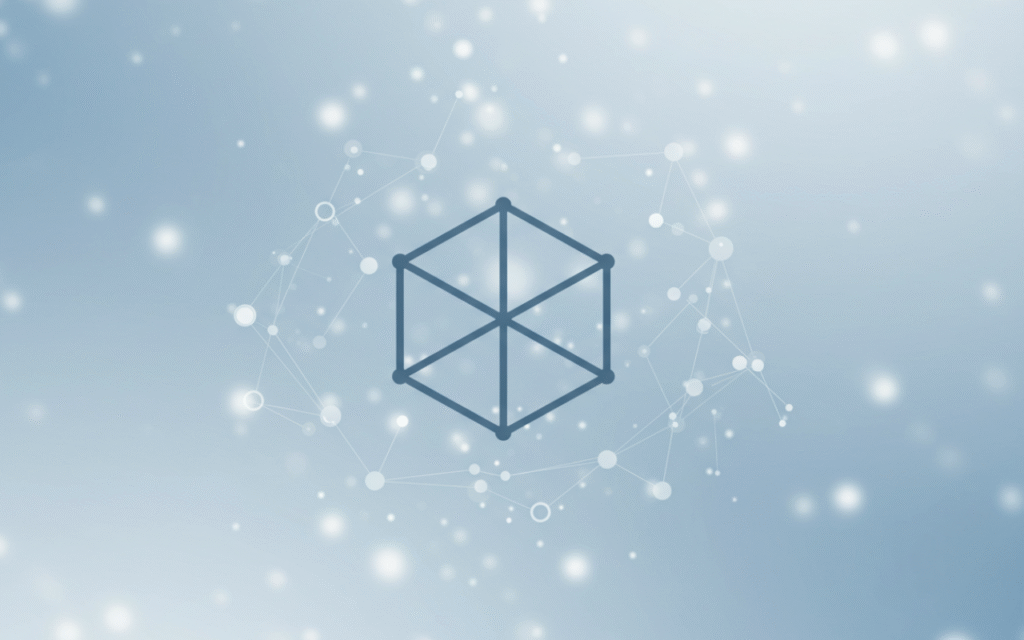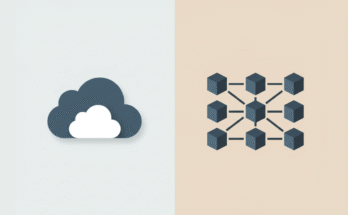In the ever-evolving world of technology, you may have come across the term “DApp” and wondered what it means. Short for “decentralized application“, DApps are an innovative type of software application that operates on a blockchain or peer-to-peer network rather than relying on a single centralized server. But what sets DApps apart from traditional applications, and why are they gaining so much attention? Let’s dive into the fascinating world of DApps to uncover their key features and understand how they work.

What Is a DApp?
At its core, a DApp is an application that runs on a decentralized network. Unlike traditional apps, which are managed by a central authority (like a company’s server), DApps leverage blockchain technology to distribute data and processing power across multiple nodes. This decentralized structure offers greater transparency, security, and user control.
DApps can serve a variety of purposes, from financial services and gaming to social media platforms and supply chain management. Ethereum, one of the most popular blockchain platforms, is widely used for developing DApps because it provides the tools and infrastructure developers need to create smart contracts, self-executing agreements that automate processes within a DApp.
Key Features of a DApp
→ What makes a DApp truly unique? Let’s explore its defining characteristics:
- Decentralization: One of the most important features of a DApp is its decentralized nature. Instead of being hosted on a single server, DApps run on a distributed network of computers (nodes). This makes them more resilient to censorship, downtime, or single points of failure.
- Blockchain-Based: DApps rely on blockchain technology to store data and execute transactions. Blockchain ensures that all activities within the app are transparent and immutable, meaning they cannot be altered without consensus from the network.
- Open Source: Most DApps are open source, meaning their code is available for anyone to view, modify, or improve. This fosters collaboration among developers and ensures transparency in how the application operates.
- Smart Contracts: Smart contracts are the backbone of many DApps. These self-executing pieces of code automatically perform actions when certain conditions are met. For example, in a decentralized finance (DeFi) app, a smart contract could automatically transfer funds when a loan is repaid.
- Tokenization: Many DApps use tokens to power their ecosystems. These tokens can have various uses, such as facilitating transactions, rewarding users, or granting governance rights within the app. Some DApps even create their own native tokens as part of their platform.
- User Empowerment: In contrast to traditional apps where users often have limited control over their data, DApps prioritize user empowerment. Users retain ownership of their data and can interact directly with the application without intermediaries.
How Do DApps Work?
→ To understand how DApps function, let’s break down the process step by step:
- The Role of Blockchain: At the heart of every DApp is a blockchain network. This serves as the foundation for storing data, verifying transactions, and maintaining security. Ethereum is a popular choice for building DApps because it supports smart contracts and offers flexibility for developers.
- Smart Contracts in Action: Smart contracts are deployed on the blockchain and act as the rules governing the DApp’s functionality. For example, in a decentralized marketplace DApp, a smart contract could handle payments between buyers and sellers once both parties agree on the terms.
- Decentralized Storage: Instead of relying on centralized servers to store user data, DApps often use decentralized storage solutions like IPFS (InterPlanetary File System). This ensures that data is distributed across multiple nodes for added security and reliability.
- User Interaction: Users typically interact with DApps through a web interface or mobile app, just like they would with any other application. However, instead of logging in with an email or password, users connect their crypto wallets (such as MetaMask) to access the app’s features.
- Incentives for Participation: Many DApps incentivize users to participate in their ecosystem by rewarding them with tokens or other benefits. For instance, in a decentralized social media platform, users might earn tokens for creating content or engaging with others.
Examples of Popular DApps
→ To see how DApps are transforming industries, let’s take a look at some real-world examples:
- Uniswap (DeFi): Uniswap is a decentralized exchange (DEX) that allows users to trade cryptocurrencies directly with one another without needing an intermediary. It uses smart contracts to facilitate trades and provide liquidity.
- Axie Infinity (Gaming): Axie Infinity is a blockchain-based game where players collect, breed, and battle virtual creatures (called Axies). Players can earn cryptocurrency by participating in the game, making it part of the “play-to-earn” movement.
- OpenSea (NFT Marketplace): OpenSea is a decentralized marketplace for buying, selling, and trading non-fungible tokens (NFTs). It operates on Ethereum and allows artists and creators to monetize their digital assets.
- Brave Browser (Web Browsing): Brave is a privacy-focused web browser that rewards users with Basic Attention Tokens (BAT) for viewing ads. It’s an excellent example of how DApps can disrupt traditional advertising models.
Benefits of Using DApps
→ Why should you care about DApps? Here are some reasons why they’re gaining traction:
- Enhanced Security: The decentralized nature of DApps makes them less vulnerable to hacking or data breaches.
- Transparency: Since all transactions are recorded on a public ledger, users can trust that the system operates fairly.
- Censorship Resistance: Without a central authority controlling the app, it’s harder for governments or corporations to censor or shut it down.
- Global Accessibility: Anyone with an internet connection can access and use a DApp, making them inclusive and borderless.
- User Control: Users maintain ownership of their data and assets, giving them greater autonomy.
Challenges Facing DApps
→ Despite their potential, DApps aren’t without challenges:
- Scalability Issues: Blockchain networks can become congested during periods of high activity, leading to slower transaction times and higher fees.
- Complexity: Using DApps often requires some knowledge of blockchain technology and cryptocurrency, which can be intimidating for newcomers.
- Regulatory Uncertainty: Governments around the world are still figuring out how to regulate blockchain-based applications.
- Adoption Barriers: For widespread adoption, DApps need to improve user experience and compete with traditional apps in terms of convenience.
The Future of DApps
As blockchain technology continues to mature, we can expect DApps to play an increasingly important role in our digital lives. From revolutionizing finance with DeFi platforms to enabling new forms of online collaboration through decentralized social networks, the possibilities are endless.
Developers are also working on solutions to address current challenges like scalability and usability. Layer 2 solutions (such as rollups) and alternative blockchain platforms are being developed to make DApps faster and more cost-effective.
Conclusion
DApps represent an exciting shift toward a more decentralized internet where users have greater control over their data and digital interactions. While there’s still work to be done in making them more accessible and scalable, their potential to disrupt traditional industries is undeniable.
Whether you’re curious about blockchain technology or looking for ways to explore decentralized finance or gaming, diving into the world of DApps is well worth your time. Who knows? You might just discover an app that changes the way you think about technology forever.



